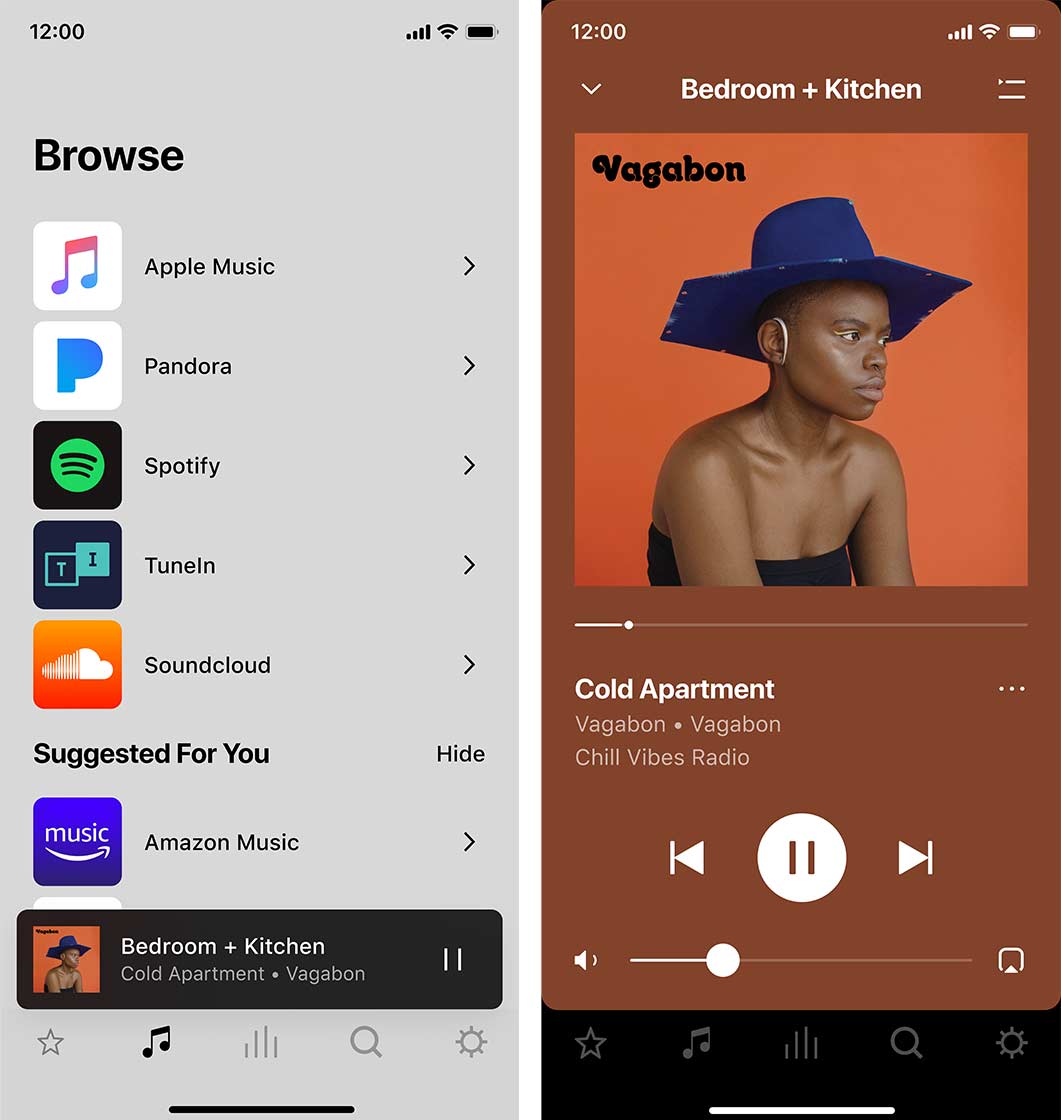

Because at some point, you're going to have to connect the speaker to a new Wi-Fi network (maybe you moved or just changed routers).
#DO I NEED SOFTWARE TO PLAY MY SONOS SPEAKERS HOW TO#
If you own a Sonos speaker, one of the most important things to learn is how to factory reset it. (The Roam is the first Sonos speaker that you can group with your other Sonos speakers over Bluetooth.) Choose " Autoplay Room" so that your Sonos speakers will automatically play when the Line-In detects a signal.Ī cheaper-but-less effective way to use your Sonos speakers as computer speakers is to get a Sonos's newest speaker, the Roam ($169), connect it to your computer via Bluetooth, and then group it with your other Sonos speakers within the Sonos app.Open the Sonos app, go to Settings, Room Settings and then choose the Sonos speakers you want to use as your new computer speakers.This will link your computer’s audio to the Sonos app. Connect your laptop or desktop to the Sonos Port via its line-in input.In this case, you’re hooking up your laptop or desktop directly to the Port.
:max_bytes(150000):strip_icc()/003-how-to-connect-google-home-to-sonos-speakers-4690001-d87a5e40f5304055b5da47a0695a2a2a.jpg)
The streamer is typically used to stream music to analog speakers or to sync those speakers to your existing multi-room system. It's kind of messy and definitely expensive, but it can be done.įirst, you're going to buy a Sonos Port ($449). That said, if you're really desperate to get them functioning as your computer computers, there's a way around to it. Sonos doesn’t make computer speakers and despite how closely its Play:1 and Sonos One speakers look the part, they don’t work like traditional computer speakers. How to use Sonos speakers as computer speakers

It's still a delay, but you can't really notice it. The Low setting has an audio delay of 75 milliseconds. By default, the Line-In connection of your Sonos speaker or wireless amp is set to Max, which is 2,000 milliseconds or two second this allows for the most time for the Sonos product to optimize its sound. In this menu, there are four different audio delays that you can choose from: Max (2,000 ms), High (150 ms), Medium (113 ms) and Low (75 ms).
Scroll down and select Audio Delay > select Low (75ms). Select your speaker or wireless amp with the Line-In connection. Open the Sonos app > select Settings > and select System. Make sure the Line-In connection is set up properly with your Sonos product. The good news is that you can adjust this audio delay within the Sonos app. However, this audio delay kind of defeats a lot of the joy of analog audio. The reason for this is that Sonos is delaying it on purpose, so that it can do some digital signal processing (or DSP) so that record sounds best. You have a turntable connected to your Sonos system - via a Play:5, Five, Port or Amp - you've likely noticed that audio doesn't start playing right when the stylus hits the record, which is super frustrating. How to get of the audio delay when connected to a turntable Open the Sonos app > Room Settings > select the speaker > and turn Trueplay off. You can turn off TruePlay in this same menu. Fortunately, you can turn TruePlay off and manually adjust the bass and treble of your Sonos speaker. Of course, this is Sonos's interpretation of what sounds best, and you might like something different. One of the best features that Sonos has is TruePlay (and Automatic TruePlay on the Roam), a software that calibrates each Sonos speaker so that it sounds best for the room it is in. How to manually adjust the EQ of your Sonos speakers You can then select a specific playlist to start playing from your Spotify or Apple Music (or whatever streaming service you use). All you have to do is take advantage of the Alarm feature within the Sonos app.įrom here you can make a custom alarm that plays on one or more of your Sonos speakers at specific time. Or you can schedule your Sonos speakers to start playing at a certain time, as well as stop playing at a certain time. Turn your Sonos speaker into an alarm clockĮven if you don't have Sonos speaker that has a built-in voice assistant, like Alexa or Google Assistant, you can still turn it into an alarm clock so that you can wake up to your favorite song. (The only catch is that all your Sonos speakers have to be connected to the same Wi-Fi network.) All Sonos speakers have a Play/Pause button, so this little technique will work with all Sonos speakers. Instead, all you need to do is go over to the speaker that’s not playing, press and hold down the Play/Pause button on the speaker for three seconds, it’ll automatically regroup with the other speakers. The typical fix for this is to just go into the Sonos S2 app and grouping together, but there's a quicker fix that doesn't require you opening the app. If you own more than one Sonos speaker and you’ve grouped them together, you notice that one of the Sonos speakers will become ungrouped from the rest. The Best Active Speakers of 2022 How to regroup your Sonos speakers without the app



:max_bytes(150000):strip_icc()/003-how-to-connect-google-home-to-sonos-speakers-4690001-d87a5e40f5304055b5da47a0695a2a2a.jpg)



 0 kommentar(er)
0 kommentar(er)
